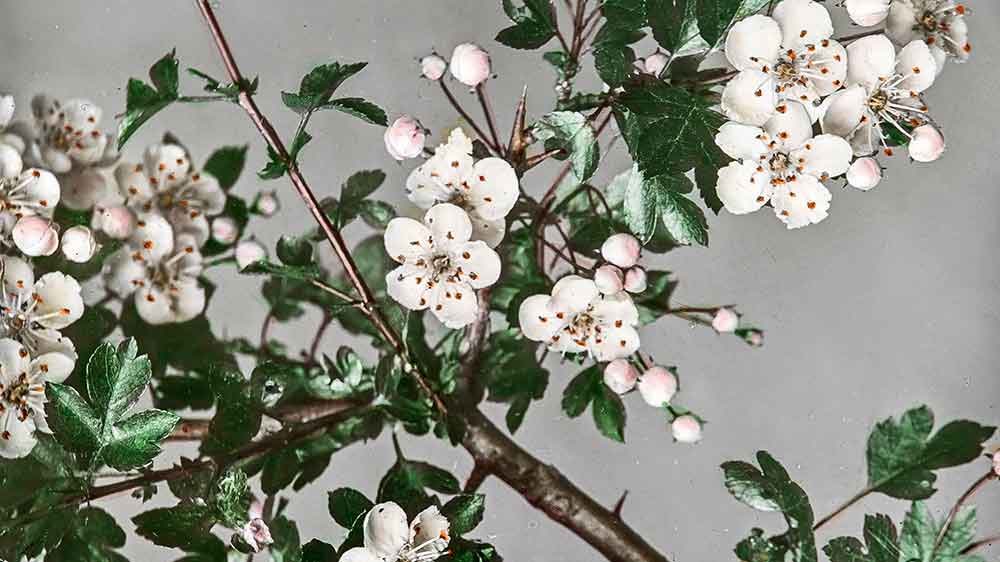Botanical Works of Art
Five wooden boxes buried in the collection of the Botanical Museum were hiding a genuine treasure trove: Hand-colored glass diapositives depicting fungi, lichen, mosses, ferns and flowering plants. Museum curator Christiane Jacquat discovered the slides by chance in the cellar of the Department of Plant and Microbial Biology. The entire collection from the Botanical Museum was entrusted to the university department in 2015. Jacquat, enchanted by the beauty and craftsmanship of the photographic slides, began work on restoring them, and had the whole set of 208 plant pictures digitalized.
Like modern color photos
At first glance, the toadstools, moss and ferns in their natural habitats look deceptively realistic – like modern color photographs. It was only when Christiane Jacquat put the slides under the microscope that she realized that they were black and white photographs that had been painstakingly hand-painted in minute detail. Their creator was obviously also a talented artist: With the finest of paintbrushes he or she had managed to capture subtle shades of color and interplays of light and shadow on the small 8-10 cm2 slides. “The pictures on the diapositives are miniature works of art,” says Christiane Jacquat.
On the trail of mysterious initials
When could these 208 botanical slides have been made, and by whom? Christiane Jacquat found herself faced with a puzzle that she felt compelled to solve. Many of the diapositives had the initials I.H. engraved or painted on them – but who was the mysterious I.H.? Jacquat’s intensive investigations finally enabled her to solve the riddle and identify the artist: His name was Josef Hanel, he came from the Sudetenland, and he made the slides between 1915 and 1940.
In her new book Die Pflanzenbilder des «I. H.»; Eine rätselhafte Sammlung handkolorierter Glasdiapositive [The Plant Pictures of “I.H.”; a Puzzling Collection of Hand-Painted Glass Diapositives], Christiane Jacquat reconstructs her treasure hunt and tells Josef Hanel’s life story. Originally an ornamental painter, Josef Hanel taught himself photography and specialized in the production of colored photographic slides for teaching purposes. Many of his photographs were used for publication – for example in a guidebook on edible mushrooms published during the First World War.
Botanical teaching aids
Josef Hanel sold his glass diapositives for 1.80 Reichsmarks to customers including the company Wachenfeld & Schwarzschild in Kassel. The Botanical Museum bought Hanel’s slides from them in 1927 to use for teaching purposes. Then as now, accurate depictions were needed in order to teach and learn about plant systems. Although color film had become affordable from the end of the 19th century, hand-painted glass plates were more suitable for projection onto big screens due to their depth of field. “The accuracy of Hanel’s diapositives means they are of great scientific value,” says Christiane Jacquat.
Book launch on 30 March
Christiane Jacquat will present her book about the work of talented photographer and artist Josef Hanel at the launch event at the UZH Botanical Museum on 30 March 2019, where pictures of Josef Hanel’s hand-painted glass diapositives will also be on display.
